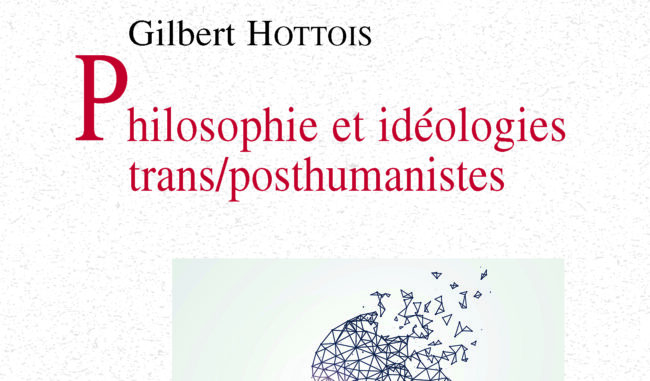Transhumanism, first popularized in North America in the 1960s (by Ray Kurzweil) and more particularly from the 1980s onwards (when a significantly large movement formed around these ideas), advocates the use of science and technology to improve the physical and mental characteristics of human beings, and hence to impel humanity beyond the human condition in the strict sense of the term. Drawing on the convergence of technologies (IT, nano- and bio-technologies and the cognitive sciences), that movement has been boosted by the advances we have seen in recent years, particularly in the area of artificial intelligence. But what is transhumanism? What are its philosophical and ideological underpinnings? And what is its proponents’ ultimate goal? Might it lead to a posthumanism, relegating the human to the status of historical relic?
In a recent work, Gilbert Hottois set about unpicking the ideological impulses behind transhumanism and its extreme version, posthumanism. Pierre Papon presents us with the broad outlines of that study here, while also stressing the limitations of this ideology when it comes to the medium/long-term challenges facing humanity. If it is essential not to lower our guard at the ethical level, we should probably also engage in a little demystification: techno-scientific progress is still moving too slowly for the plans of the transhumanists actually to be implemented. We can only hope that this continues to be the case…




